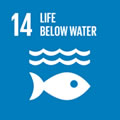Por favor, use este identificador para citar o enlazar a este item:
http://hdl.handle.net/10261/157206COMPARTIR / EXPORTAR:
 SHARE
BASE SHARE
BASE
|
|
| Visualizar otros formatos: MARC | Dublin Core | RDF | ORE | MODS | METS | DIDL | DATACITE | |

| Campo DC | Valor | Lengua/Idioma |
|---|---|---|
| dc.contributor.author | Broullón, Daniel | es_ES |
| dc.contributor.author | Pérez, Fiz F. | es_ES |
| dc.contributor.author | Velo, A. | es_ES |
| dc.contributor.author | Suzuki, Toru | es_ES |
| dc.date.accessioned | 2017-11-10T13:17:59Z | - |
| dc.date.available | 2017-11-10T13:17:59Z | - |
| dc.date.issued | 2017 | - |
| dc.identifier.citation | International Carbon Dioxide Conference (2017) | es_ES |
| dc.identifier.uri | http://hdl.handle.net/10261/157206 | - |
| dc.description | 1 poster presented at the 10th International Carbon Dioxide Conference, Interlaken, Switzerland, 21 August 2017 - 25 August 2017.-- Daniel Broullón ... et al. | es_ES |
| dc.description.abstract | For decades, the anthropogenic modification of the carbon cycle has been widely studied. More recently, ocean acidification studies have increased significantly. Establishing robust climatologies of seawater CO2 chemistry variables and building models are a key point for a better understanding of the associated processes. The availability and quality of data is crucial for the evaluation of climate models and, consequently, to improve their predictions. Version 2 of the Global Ocean Data Analysis Project (GLODAPv2) is an internally consistent data product composed of data from 724 scientific cruises covering the entire global ocean. Among others, it contains seawater CO2 chemistry variables such as total alkalinity (AT), total dissolved inorganic carbon (TCO2) and pH. This sparse dataset has been subjected to extensive quality control and different interpolation techniques have been applied to extend the data coverage on a homogeneous grid (Lauvset et al. 2016). We propose a novel neural network approach to generate annual and monthly climatologies of AT, TCO2, pH and both calcite and aragonite saturation state from the GLODAPv2 dataset for the preindustrial and current periods. These climatologies are fitted to the World Ocean Atlas 2013 version 2 (WOA13v2) grid. WOA13v2 is a set of objectively analyzed (1° grid) climatological fields of different oceanographic variables (but not CO2 system) at standard depth levels for annual, seasonal, and monthly compositing periods for the World Ocean. A feed-forward neural network was chosen in a multi-layer architecture, which allows linear and nonlinear variability to be assimilated by the network. The proposed configuration is able to approximate most functions arbitrarily well (Hagan et al., 2014). We have tested different neural network designs and sizes to obtain the minimum error. For that, the number of neurons in the network was varied and different training techniques were used. The input variables introduced in the network, which must be related to AT and TCO2 variability, were latitude, longitude, depth, potential temperature, phosphate, nitrate, silicate, year, month and atmospheric pCO2. First, the network was trained with GLODAPv2 data and then AT and TCO2 fields were derived from WOA13v2 data. Saturation states and pH were computed from these two variables. The monthly pre-industrial climatology will be generated by eliminating anthropogenic carbon from the ocean. | es_ES |
| dc.description.sponsorship | This research was supported by Ministerio de Educación, Cultura y Deporte (FPU grant FPU15/06026), Ministerio de Economía y Competitividad through the A. RIOS (CTM2016-76146-C3-1-R) project co-funded by the Fondo Europeo de Desarrollo Regional 2014-2020 (FEDER) and EU Horizon2020 through the AtlantOS project (grant agreement 633211). | es_ES |
| dc.language.iso | eng | es_ES |
| dc.relation | info:eu-repo/grantAgreement/MINECO/Plan Estatal de Investigación Científica y Técnica y de Innovación 2013-2016/CTM2016-76146-C3-1-R | es_ES |
| dc.relation | info:eu-repo/grantAgreement/EC/H2020/633211 | es_ES |
| dc.rights | openAccess | es_ES |
| dc.subject | Ocean | es_ES |
| dc.subject | Carbonate system | es_ES |
| dc.subject | Climatologies | es_ES |
| dc.subject | Neural networks | es_ES |
| dc.title | Climatologies of seawater CO2 chemistry variables: A neural network approach | es_ES |
| dc.type | póster de congreso | es_ES |
| dc.description.peerreviewed | Peer reviewed | es_ES |
| dc.contributor.funder | Ministerio de Economía y Competitividad (España) | es_ES |
| dc.contributor.funder | European Commission | es_ES |
| dc.relation.csic | Sí | es_ES |
| oprm.item.hasRevision | no ko 0 false | * |
| dc.identifier.funder | http://dx.doi.org/10.13039/501100000780 | es_ES |
| dc.identifier.funder | http://dx.doi.org/10.13039/501100003329 | es_ES |
| dc.subject.uri | http://metadata.un.org/sdg/14 | es_ES |
| dc.type.coar | http://purl.org/coar/resource_type/c_6670 | es_ES |
| dc.subject.sdg | Conserve and sustainably use the oceans, seas and marine resources for sustainable development | es_ES |
| item.languageiso639-1 | en | - |
| item.fulltext | With Fulltext | - |
| item.openairecristype | http://purl.org/coar/resource_type/c_18cf | - |
| item.cerifentitytype | Publications | - |
| item.grantfulltext | open | - |
| item.openairetype | póster de congreso | - |
| Aparece en las colecciones: | (IIM) Artículos | |
Ficheros en este ítem:
| Fichero | Descripción | Tamaño | Formato | |
|---|---|---|---|---|
| Climatologies_seawater_poster.pdf | Poster | 3,09 MB | Adobe PDF |  Visualizar/Abrir |
| Climatologies_seawater_abstract.pdf | Abstract | 98,51 kB | Adobe PDF |  Visualizar/Abrir |
CORE Recommender
Page view(s)
231
checked on 24-abr-2024
Download(s)
132
checked on 24-abr-2024
Google ScholarTM
Check
NOTA: Los ítems de Digital.CSIC están protegidos por copyright, con todos los derechos reservados, a menos que se indique lo contrario.


